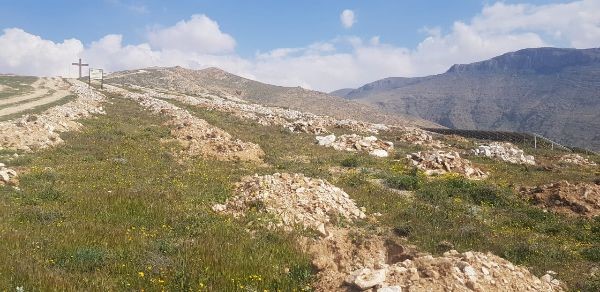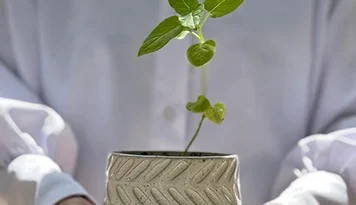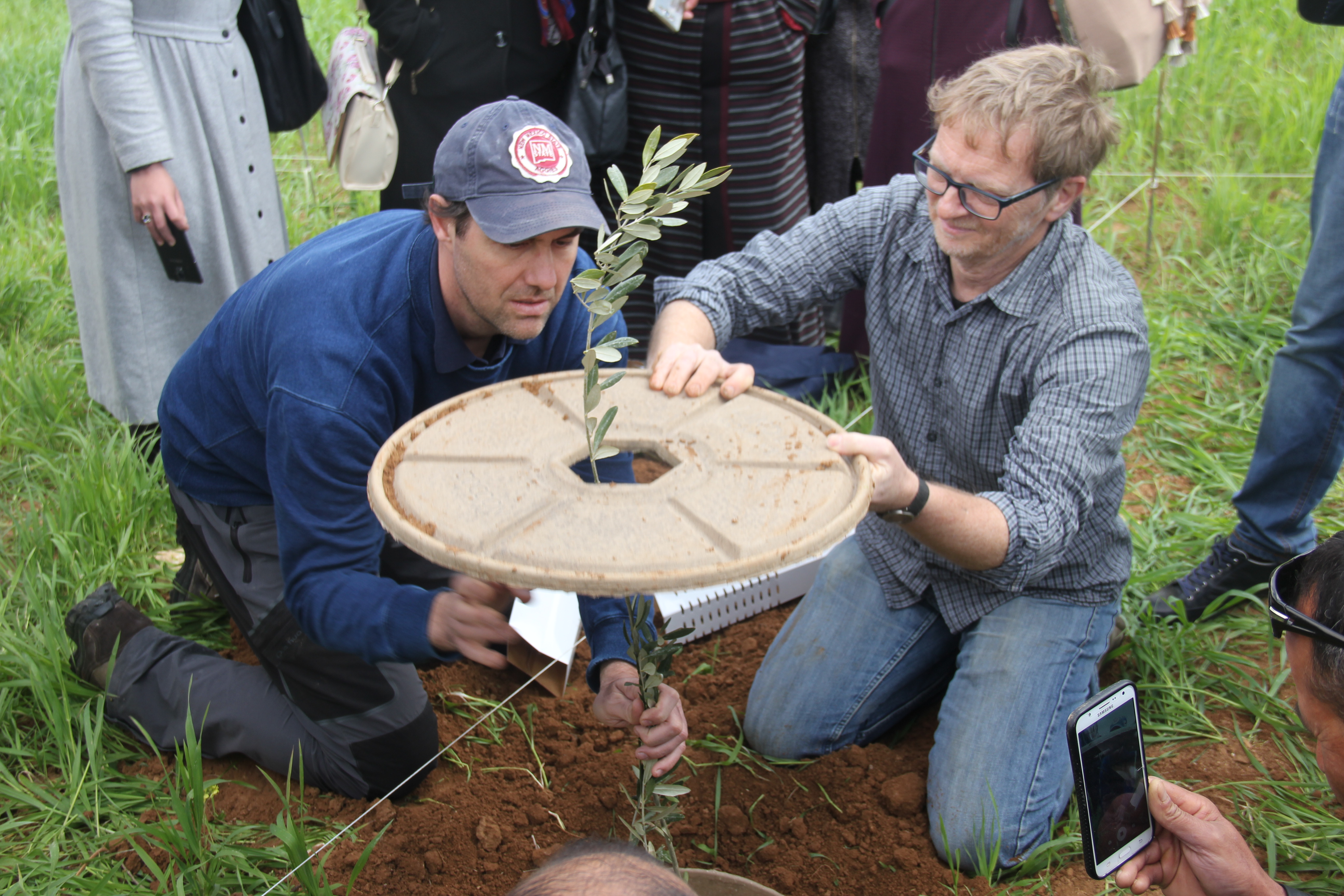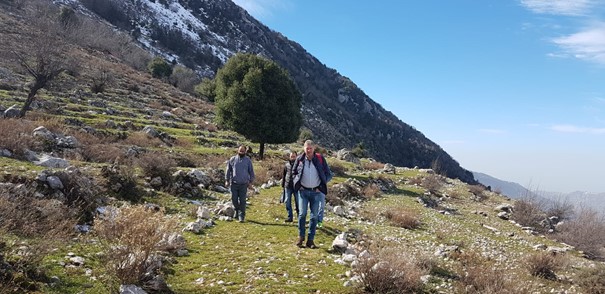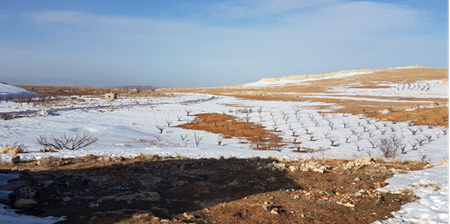In our ‘Field Notes’ series, members of the Menaqua team write about their visits to and experiences in our project countries. In this edition, Preethi Sridharan, Menaqua’s agroforestry specialist, reports from Jordan.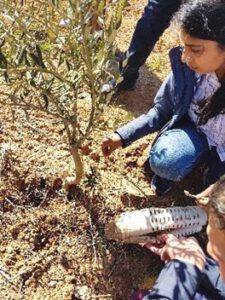
During our visits to Middle Eastern countries like Jordan, we see beautiful, undulating landscapes and highlands. As we move across rangelands and barren patches of lost forests, we can’t help but think about the history of the land. Was it always like this? Or would the landscape be different if it were just a little greener? We are here to monitor the progress of our projects and discover new areas for reforestation. But before we pick up a spade and start planting, we would be wise to first understand the narrative of the landscape and the people within it.
Understanding environmental limitations
Our experience with reforestation in the Middle East has been monumental. We have encountered both successes and setbacks. But one of the key learnings has been the need to understand the environment (climate, water and soil) and its limitations, the economic conditions, and the importance of mobilizing local support.
“Funders interested in supporting restoration need to understand the scope and limitations in these landscapes and focus on long-term returns.”
The underlying environmental limitations are partially due to the characteristics of dry landscapes, but many of them are driven by overexploitation of resources. Deforestation, uncertain rainfall patterns, degrading soil conditions and overgrazing are pushing the limits of the land. And as more areas become barren, desertification increases.
The barriers to reforestation are most obvious in open barren areas, where the absence of trees increases land surface temperatures and direct radiation from the sun causes the soil to dry out and erode. This, in turn, leads to loss of microbial life and organic matter that is essential for plants to grow.
Deterioration of soil conditions in arid and semi-arid countries like Jordan is particularly problematic. In open barren areas, soil loses the capacity to retain the already minimal rainfall, causing excessive runoff and hindering recharge of the groundwater system. Ultimately, the survival potential of newly planted trees is greatly diminished, and supplementary irrigation is often applied. Using already limited water resources for reforestation can be detrimental to local communities that may need water for food production and daily use.
Building trust
Ma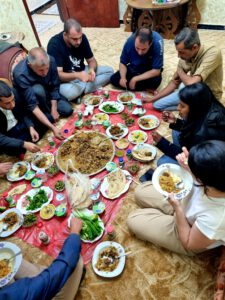 ny semi-arid landscapes are also densely populated by people who are struggling to survive. Their socio-economic concerns are greater than their concern for biodiversity or climate change. Requiring people to care for reforested land when there are no quick returns is often perceived as wasteful. The lack of economic incentives for protecting, maintaining and planting forests results in low participation and cooperation among local communities. Building trust with and receiving support from these communities can be pivotal for reforestation initiatives to succeed.
ny semi-arid landscapes are also densely populated by people who are struggling to survive. Their socio-economic concerns are greater than their concern for biodiversity or climate change. Requiring people to care for reforested land when there are no quick returns is often perceived as wasteful. The lack of economic incentives for protecting, maintaining and planting forests results in low participation and cooperation among local communities. Building trust with and receiving support from these communities can be pivotal for reforestation initiatives to succeed.
Another key issue in reforestation in arid and semi-arid landscapes is the focus on quantity over quality. High-density planting and quick turnover projects are not suitable for dry landscapes, as the failure of several large-scale planting initiatives in the region has shown. What’s more, the emphasis on large-scale planting diverts focus away from more holistic restoration projects, which emphasize biodiversity rejuvenation and nature stewardship. Funders interested in supporting restoration need to understand the scope and limitations in these landscapes and focus on long-term returns.
Tangible solutions
Now, let us look at what we can do and address some tangible solutions. Although arid and semi-arid landscapes are challenging, they are very resilient. This can also be said of the people who live in them. Once you gain the local community’s trust, there is a sense of mutual respect and camaraderie. Involving local communities, for instance by creating opportunities for young people to develop practical and entrepreneurial nature-based skills, will result in long-term and wide-ranging benefits.
Working in areas with limited natural resources, we simply cannot continue unsustainable planting practices. While in Jordan, we encountered several organizations and institutions that are developing techniques and technologies that increase resource use efficiency in agriculture and tree planting. One example is new nursery techniques. These use native seeds for germination and follow up with a hardening process to make seedlings more resilient to the natural environment before planting, thereby increasing survival success. In a country where water is scarce even for essential purposes, technologies that reduce water usage, such as the Cocoon, can also be highly effective in reforestation initiatives. Additionally, incorporating permaculture techniques to improve soil and water retention can greatly add to survival success.
Creating benefits for communities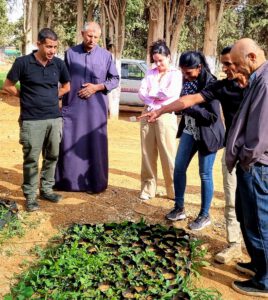
Lastly, and most importantly for maintaining landscape integrity, is a good understanding of what tree to plant and where and when to plant it. Native species, whether forest or fruit trees, are well equipped to survive local conditions. In addition, by integrating native fruiting trees, edible and use cover crops into forestry projects, we can add economic incentives and non-timber forest product returns that can be extremely attractive for communities.
We often hear that increasing green cover helps combat the effects of climate change. Tree planting for land restoration is one route to achieving this goal. What people often forget is that trees take years to grow, even in temperate zones. To reforest the harsh landscapes of arid and semi-arid regions, the challenge is bigger but so are the rewards. To reap these rewards, we must first take the right steps – and we must take them now.


